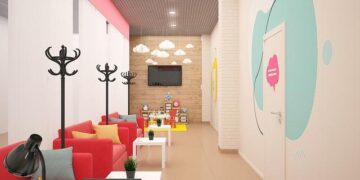Innovative Mechanical Engineering Project Brings Joy to Children
Enhancing Accessibility Through Creativity
The WCC Mechanical Engineering Technology initiative has recently unveiled an exciting project aimed at making playtime more inclusive for younger audiences. This innovative endeavor highlights the fusion of engineering principles with a commitment to accessibility, allowing children of all abilities to engage in recreational activities.
Bridging the Gap in Play
As communities increasingly advocate for inclusivity, ensuring that playgrounds cater to diverse needs is paramount. The initiative spearheaded by local engineering students seeks to address this necessity head-on. By designing equipment and solutions that eliminate barriers, they aim to promote social interaction and physical activity among all children regardless of their circumstances.
A Collaborative Effort
This project stems from collaborative learning experiences within the program at WCC, where aspiring engineers apply theoretical knowledge in practical settings. Student teams crafted designs through brainstorming sessions and prototyping, effectively transforming their concepts into realizable plans that encourage communal play. The integration of feedback from caregivers and educators throughout the design process ensured that practical needs were thoroughly considered.
Statistics Highlighting the Need for Inclusive Play Spaces
Recent studies reveal a staggering statistic: only about 14% of playgrounds are currently designed with features accessible for children with disabilities. This shortfall emphasizes an urgent demand for inclusive designs that allow kids to experience joy without limitations during their playtime. Moreover, research indicates that when equipped with accessible materials and spaces, children exhibit enhanced social skills and engagement levels—vital components needed during formative years.
Impressive Design Elements
The standout aspect of this mechanical engineering project is its array of inventive design elements tailored specifically for accessibility challenges faced by many children today:
- Adaptive Climbing Ramps: These ramps feature gentle slopes combined with handrails designed specifically for wheelchairs or mobility aids.
- Sensory Stations: Gear constructed utilizing varied textures and sounds provides stimulation catering to children’s sensory processing needs.
- Buddy Benches: These benches encourage peer support by fostering friendships among those who require additional emotional connection while playing together.
By embracing such innovative solutions, WCC’s engineering crew successfully transforms typical playground features into dynamic tools fostering creativity while encouraging cooperation among peers.
Looking Ahead: Future Development Goals
With great success evidenced thus far from this pioneering endeavor, participants aim not just towards immediate improvements but also towards extending efforts on broader scales throughout Goldsboro and beyond. Engaging community partnerships can pave pathways toward funding future installations across various public areas—amplifying awareness regarding accessible recreational options available locally.
WCC’s commitment coupled with community-driven initiatives sets precedents aiming not only at enriching childhood experiences but simultaneously laying foundations solidly rooted on principles surrounding equity in recreation environments—a cause resonating deeply within modern society’s ethos today!































